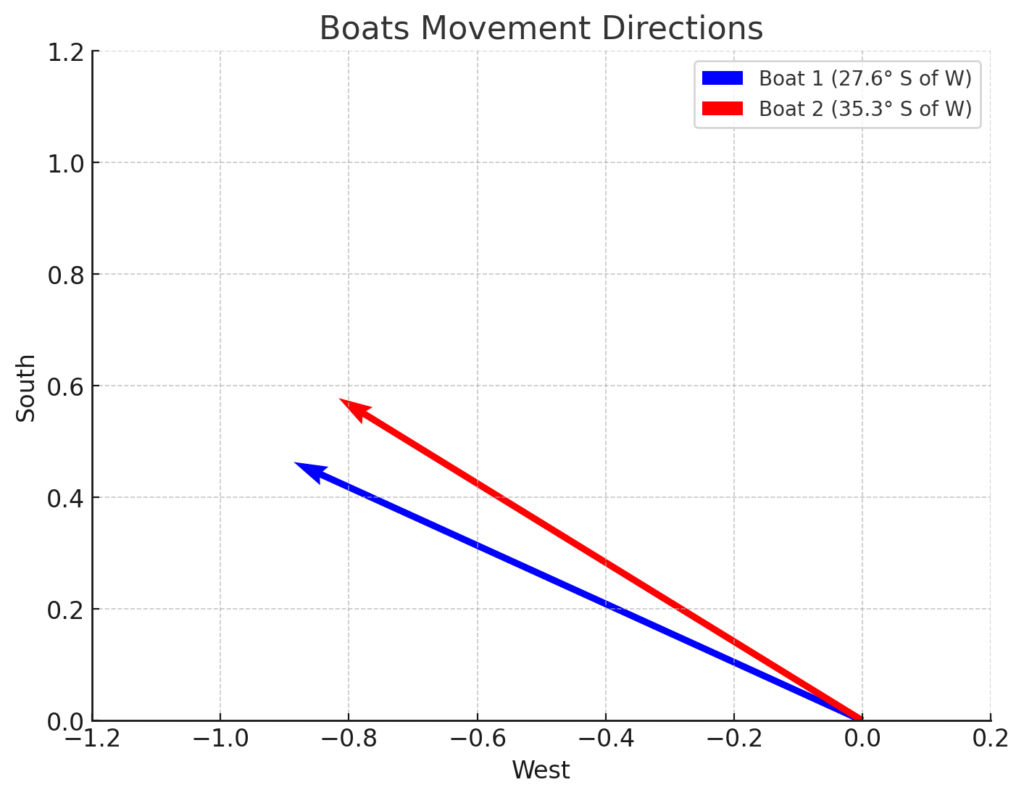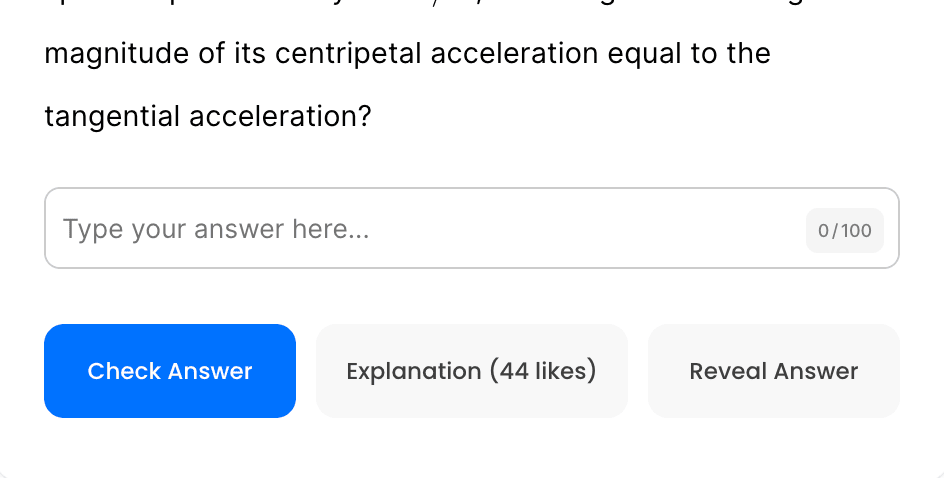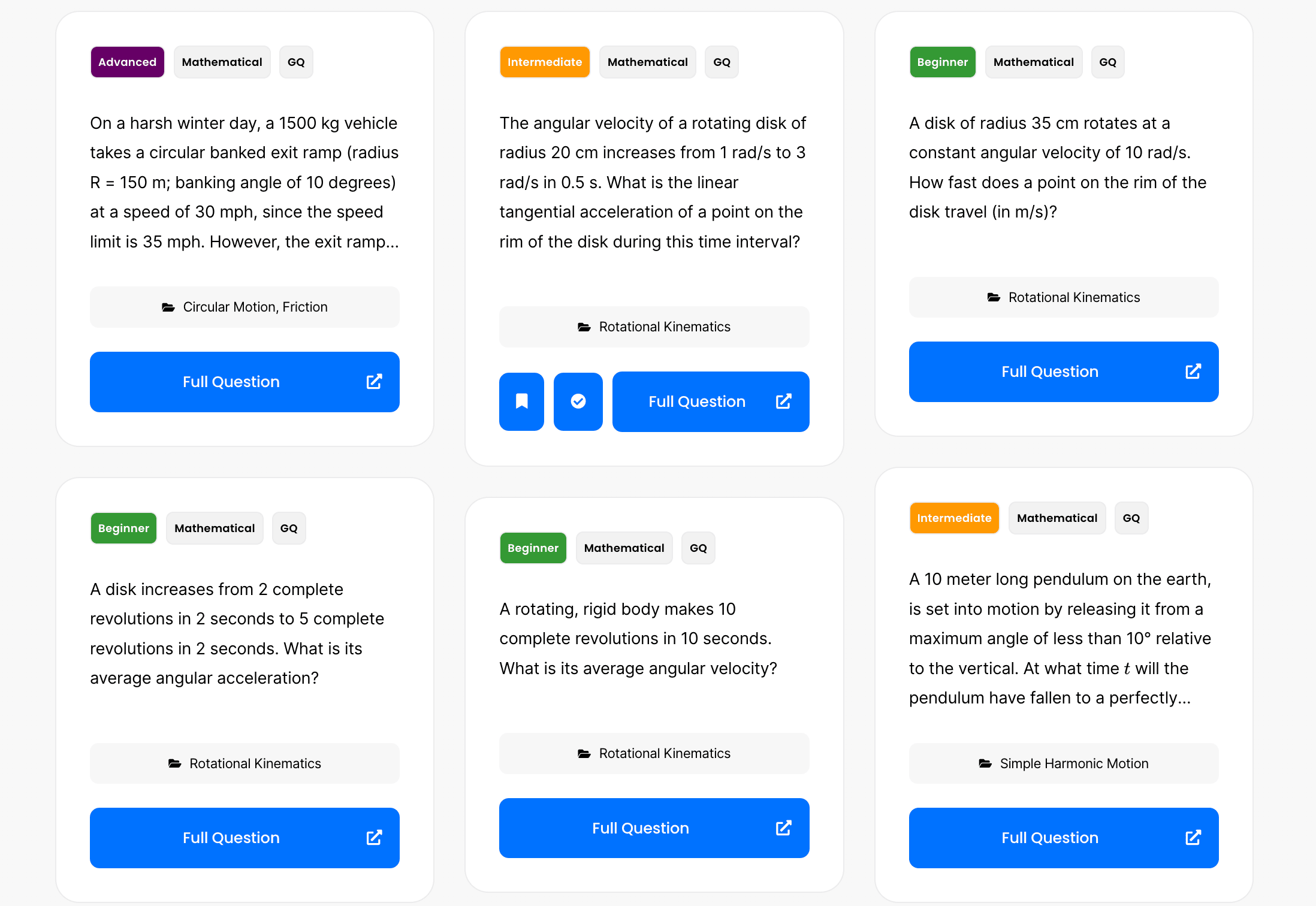Why do raindrops fall with constant speed during the later stages of their descent?
A spring is connected to a wall and a horizontal force of \( 80.0 \) \( \text{N} \) is applied. It stretches \( 25 \) \( \text{cm} \); what is its spring constant?
A projectile is fired with an initial speed of \( 36.6 \) \( \text{m/s} \) at an angle of \( 42.2^\circ \) above the horizontal on a long flat firing range.
A boat is rowed directly upriver at a speed of \(2.5 \, \text{m/s}\) relative to the water. Viewers on the shore find that it is moving at only \(0.5 \, \text{m/s}\) relative to the shore. What is the speed of the river? Is it moving with or against the boat?
A projectile is launched at angle \( \theta \) to the horizontal, with velocity \( v \), maximum vertical displacement \( s \), and angle \( \theta \) between \( 0^{\circ} \) and \( 45^{\circ} \). What will the maximum vertical displacement be if the projectile is now launched at an angle of \( 2 \theta \) from the horizontal with velocity \( v \)?
A car moves at constant speed in a circle of radius 75 m on a horizontal road. The coefficient of static friction is 0.62. Find the maximum speed the car can go without sliding.
A point \( P \) is subjected to three simultaneous forces of magnitudes \( F_A > F_B > F_C \). Point \( P \) is in equilibrium. Which of the following statements is not always true about the magnitudes of the forces?
 Two racing boats set out from the same dock and speed away at the same constant speed of 101 km/h for half an hour (0.5 hr). Boat 1 is headed 27.6° south of west, and Boat 2 is headed 35.3° south of west, as shown in the graph above. During this half-hour calculate:
Two racing boats set out from the same dock and speed away at the same constant speed of 101 km/h for half an hour (0.5 hr). Boat 1 is headed 27.6° south of west, and Boat 2 is headed 35.3° south of west, as shown in the graph above. During this half-hour calculate:
A child (mass 32 kg) in a boat (mass 71 kg) throws a 7.1 kg package out horizontally with a speed of 12.2 m/s. Calculate the velocity of the boat immediately after, assuming it was initially at rest. Ignore water resistance.
A car travels east at a steady \( 30 \) \( \text{m/s} \) for \( 5 \) \( \text{s} \). What is its acceleration during this motion?
Which launch angle gives the greatest horizontal range, assuming level ground and no air resistance?
A ball is tossed directly upward. Its total time in the air is \( T \). Its maximum height is \( H \). What is its height after it has been in the air a time \( T/4 \)? Air resistance is negligible.
By continuing you (1) agree to our Terms of Use and Terms of Sale and (2) consent to sharing your IP and browser information used by this site’s security protocols as outlined in our Privacy Policy.
Quick Start Guide
AP physics 1, AP C, honors and advanced physics students.
Quickly filter questions by units and more.


Here’s guide to using 5 UBQ filters.
GQ = general question, MCQ = multiple choice, FRQ = free response.


Click the check or bookmark button.
Now you’ll be able to see completed or bookmarked questions at a glance!
Answer keys, personalized for you.

Phy will be responsible for grading your FRQs and GQs.
No more copy and pasting. Just solve and snap.
Questions for Mastery

By continuing you agree to nerd-notes.com Terms of Service, Privacy Policy, and our usage of user data.